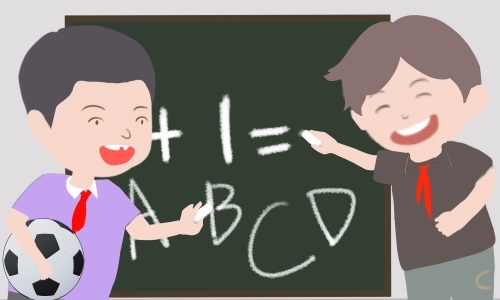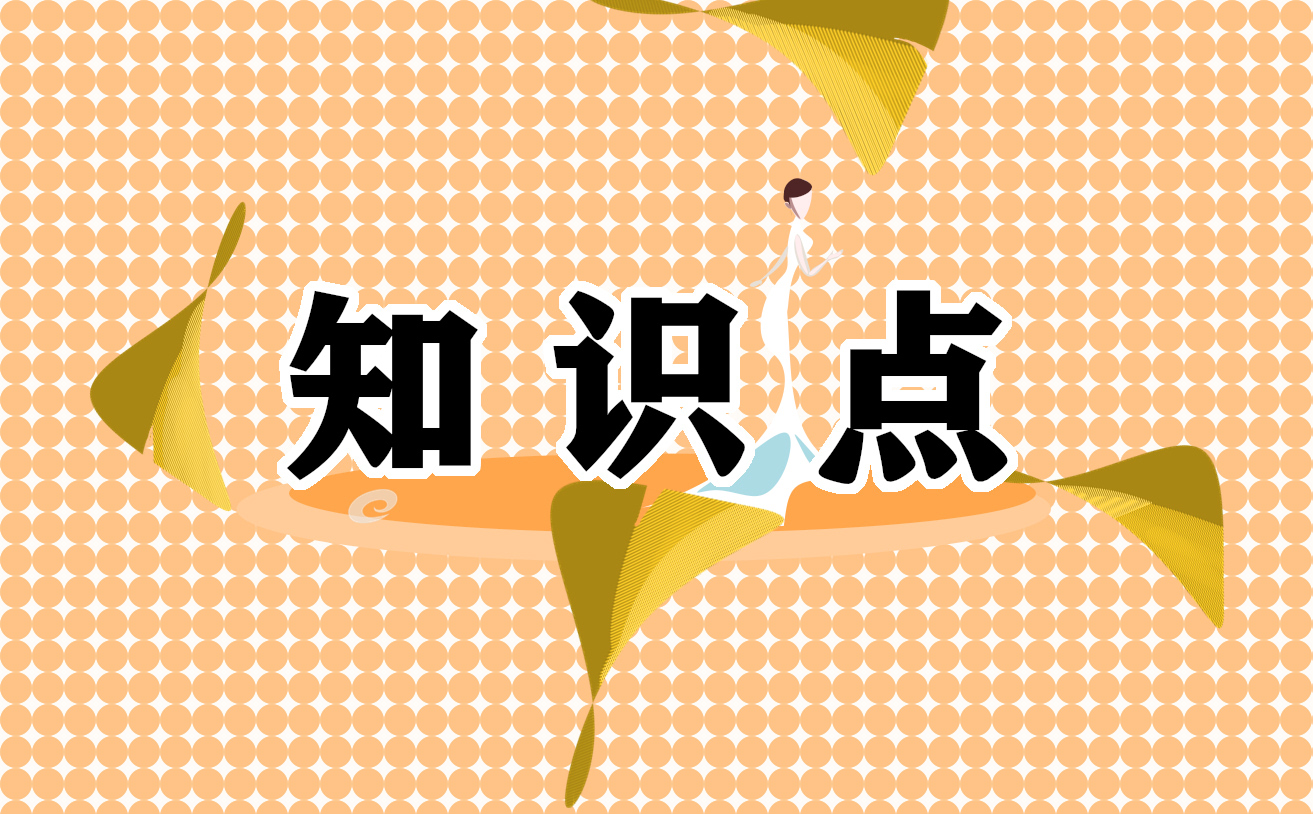2023人教版七年级下册英语知识点(梳理)
同学们!学习是一架保持平衡的天平,一边是付出,一边是收获,少付出少收获,多付出多收获,不劳必定无获!那么,以下是小编为大家带来的2023人教版七年级下册英语知识点(梳理),欢迎参阅呀!

2023人教版七年级下册英语知识点(梳理)1
1、can+动词原形,它不随主语和数而变化。
(1)含有can的肯定句:主语+can+谓语动词的原形+其他。
(2)变一般疑问句时,把can提前:Can+主语+动词原形+其他?
肯定回答:Yes,主语+can。否定回答:No,主语+can't.
(3)含有can的否定句:主语+can't+动词的原形+其他。
(4)含有can的特殊疑问句:特殊疑问词+can+主语+动词原形+其他?
2、may+动词的原形。(may为情态动词)一般疑问句是把may提前,
肯定回答是:Yes,主语 +may。否定回答是:No,主语+mustn't。或please don't。
join+某个组织,俱乐部,party,参军,党派等 “加入”
Join sb. “参加到某人中” join in (doing)sth “加入做......,参加某个活动” Join in=take part in +活动,比赛
3、说某种语言:speak+语言 4、play+球、棋、牌;play+the+乐器。
5、擅长于(做)什么:be good at +名词/动ing
6、帮助某人做某事:help sb. (to ) do sth. help sb. with sth.
7、我能知道你名字吗?May I know your name?
8、想要做什么:want to do sth 例如:I want to learn about art.
9、What club do you want to join?
I want to join the chess club and the basketball club.
10、What club does Tom want to join? He wants to join the swimming club .
11、He can’t play the violin or the piano. Can you help kids with swimming?
12、Why do you want to join the English club? Because I want to learn English well.
2023人教版七年级下册英语知识点(梳理)2
1、what time和when引导的特殊疑问句。
(1)对时间提问用what time,也可以用when。询问钟点时用what time,询问日期、月份、年份时用when。
(2)询问做某事的时间时,两者可以互换。 (3)其他询问时间的句子:
What's the time? =What time is it?现在几点了?
时刻表达法:顺读法和逆读法。
(1)顺读法:“钟点+分钟”直接读数字。
(2)逆读法:借助介词past或to表示,要先说分再说钟点。
A.当分钟不超过30分钟时(包括30分钟),即<或=30,用past表示。其结构为:“分钟+past+整点” 意为“几点过几分”。
B.当超过30分钟时,即>30,用to表示。其结构为:“所差分钟(即60—所
过分钟数)+to+下一个整点”,to译成“差”,差几分钟到几点。
C.当分钟为30分钟用half表示,当分钟为15分钟用a quarter。
2、always 总是>usually 通常>often常常>sometime 有时
3、Watch+TV、球赛 “观看,观赏”,特指长时间注视。
See+电影、医生 “看见”,强调看的结果。
Look “看”,强调看的动作,look后接宾语时要用介词at。
Read+书刊、杂志 “阅读”
4、listen to +宾语 6、Take a shower “淋浴” 7、Eat breakfast 吃早餐
5、Go to +地点名词 如:go to school go+地点副词 如:go home
2023人教版七年级下册英语知识点(梳理)3
一、本单元知识点总结
1.get to school 到校 2.take the subway 乘地铁
3.take the train 坐火车 4.leave for 到……地方去,离开去某地
5.take…to…把……带到…… 6. most students 大多数学生
7. from…to…从……到…… 8.think of 想到,想起
9.ride bikes 骑自行车 10.in other parts of the world 在世界的其他地方
11. how far 多远 (路程、距离) 12.how long多长(时间)
13.take the train to school 乘火车去上学 14.in places 在一些地方
15.go to school by boat乘船去上学 16.on the school bus乘坐校车
17.be different from和……不同 18.one 11-year old boy 一个十一岁大的男孩
二、重点知识详解
1.take +a/an/the+表示交通工具的名词,乘……去某地,是动词短语,在句中作谓语。
He takes the train. take the subway乘地铁 take a walk散步 take a shower洗个澡
take a rest休息一会 take a seat 坐下 take some medicine 吃药
2.by+表示交通工具的单数名词或on/in+ a/an/the/one’s+表示交通工具的单数名词,是介词短语作方式状语。
I get to school by bike. = I get to school on my bike.
3.walk/ride/drive/fly+to+地点名词,步行/骑自行车/开车/坐飞机去某地
表示乘交通工具方式可以互换表达相同的意义:
Take the bus to school=go to school by bus=go to school on a bus
Drive a car to work=go to work by car=go to work in a car
Fly to shanghai=go to shanghai by plane/air=take the/a plane to shanghai=go to shanghai on a/an/the plane.
4.get表示“到达”,后接名词需加to,接地点副词不加to.
reach 给示到达,是及物动词,其后直接接宾语。
arrive in+大地点 arrive at +小地点 后接副词不需介词。
5. It takes sb some money/time to do sth.花费某人多少时间/钱做某事
Sb pay some money for sth 某人为某物花费多少钱
Sb spend some time/money on sth 某人在做某事或某物上花费时间/钱Sb spend some time/ money (in)doing sth Sth cost sb some money 某物花费某人多少钱
6. How far is it from A to B?=How far is B from A?
答语有两种:W wW.x kB 1.c Om
(1) It’s…meters/miles/kilometers(away)有……米/英里/千米(远)
(2) It ‘s about ten minutes’ walk/ ride. 大约有十分钟步行/骑车的路程。
7have to 后加动词原形,侧重客观的需要,有“不得不,被迫”之意,有多种时态形式,否定式为don’t have to(needn’t)意为“不必”。
Must 侧重于说话者的主观看法,认为有必要或有义务做某事,只有现在时一种形式,否定式must’t意为“一定不要,不允许,禁止”反意词为“needn’t”。
8.感谢用语:Thank you very much , Thanks a lot , Many thanks.
回答感谢用语的句子:That’s ok /all right. 不用谢。You are welcome 不客气。 It is my pleasure./My pleasure./It is a pleasure.不客气、那是我的荣幸。/Don’t mention it。别在意。 It was nothing at all.那没什么。
三、语法归纳
(一)how 引导的特殊疑问句
1.how 引导的特殊疑问句提问交通方式,其答语分三种情况:
a. take a/an/the+交通工具(单数)
b. by+交通工具(单数)
c. on/in+限定词+交通工具
2. how far 用来提问距离,多远,其答语分为两种:
(1)用长度单位表示:It is five kilometers.
(2)用时间表示:It’s twenty minutes’ walk.
3.how long 用来提问时间,意为多久回答常用“for+段时”。
----How long have you learnt English?
----For 3 years.
how soon 用来提问做完某事还需要多长时间, 常用于将来时态时, 常用“in+时间段”来回答。
――How soon will you arrive in Beijing?
----In 3 hours.
2023人教版七年级下册英语知识点(梳理)4
Unit7 It’s raining!
◆短语归纳
1. not bad 不错
2. at the park 在公园
3. take a message for… 为……捎个口信
4. have a good time/have a great time/have fun/enjoy oneself 过得愉快
5. call sb. back 给某人回电话
6. no problem 没问题
7. right now 现在
8. talk on the phone 通过电话交谈
9. some of ......当中的一些
10. by the pool 在游泳池边
11. drink orange juice 喝橙汁
12. study hard 努力学习
13. on a vacation 在度假
14. in the mountains 在山里
15. call sb. 给某人打电话
16. write to sb. 给某人写信
◆用法集萃
1. tell sb. (not) to do sth. 告诉某人(不要)做某事
2. have a great time/have fun + (in) doing sth. 愉快地做某事
3. just right for doing sth. 做某事正合适
◆典句必背
1. How’s the weather?
天气怎么样?
2. It’s cloudy. / It’s sunny. / It’s raining.
天气多云。/ 天气晴朗。/ 天正下雨。
3. How’s it going?
情况怎么样?
4. Great! /Not bad./Terrible!
好极了!/ 不错。/糟糕!
5. Can I take a message for him?
我给他捎个口信好吗?
6. I’m having a great time visiting my aunt in Canada.
我正在加拿大愉快地拜访我的姨妈
7. My family and I are on a vacation in the mountains.
我和我的家人正在山里度假。
8. It’s hot in your country now, isn’t it?
现在你的国家天气炎热,不是吗?
◆话题写作
主题:介绍某地的天气
The Weather in Beijing
Hello, everyone! I’m from Beijing. Do you want to know the weather in Beijing? Now let me tell you something about the weather here.
In Beijing, spring is very short and warm. In summer, it’s very hot, but it often rains. We often go swimming in the river. In autumn, the weather is very dry and cool. We often go to the farm to work with the farmers to help them. In winter, it’s very cold, and sometimes it’s snowy and windy.
I like swimming, so summer is my favorite season.
Unit8 Is there a post office near here?
◆短语归纳
1. post office 邮局
2. police station 警察局
3. pay phone 付费电话
4. Bridge Street 桥街
5. Center Street 中心大街
6. Long Street 长街
7. near here 附近
8. across from 在……对面
9. next to 挨着,靠近
10. between…and… 在……和……之间
11. in front of 在……前面
12. excuse me 劳驾
13. far from 离……远
14. go along… 沿着……走
15. turn right/left 向右/左转
16. on the(或one’s) right/left 在(某人的)右边/左边
17. in my neighborhood 在我的街区
18. look like 看起来像
19. in life 一生中
20. be free 免费的/有空的
◆用法集萃
1. Turn right / left at the +序数词+ crossing. 在第几个路口向右 / 左转。
2. spend + 时间 /金钱 + on sth. 花费时间/金钱在......
spend + 时间 / +金钱 (in) doing sth. 花费时间/金钱做某事
3. watch sb. doing 观看某人正在做某事
4. enjoy doing sth. 喜欢做某事
◆典句必背
1. —Is there a hospital near here? 这附近有医院吗?
—Yes, there is. It’s on Bridge Street. 是的,有。它在桥街上。
2. —Oh… where’s Center Street? 噢……中心大街在哪里?
—It’s not too far from here. 它离这儿不太远。
3. Go along Long Street and it’s on the right. 沿着长街走,它在右边。
4. Turn right at the first crossing. 在第一个十字路口向右转。
◆话题写作
主题:指路
Where is the hotel? Let me tell you how to get there. Go down this road and then turn left. Go through First Street and Second Street. When you come to Third Street, turn right and walk on. You can see a bridge over a river. Go across the bridge. Then you can see the hotel. It’s on your right, across from the post office. You will find it.
Unit9 What does he look like?
2023人教版七年级下册英语知识点(梳理)5
人称及人称代词的不同形式(主格和宾格)
1.三种人称:第一人称(I, we),第二人称(you, you),第三人称(he, she, it)。
2.人称代词的主格,即人称代词位于句子主语位置时的形态:I, We, You, You, He, She, It
3.人称代词的宾格,即人称代词位于句子宾语位置时的形态:me, us, you, you, him, her, it。
4.形容词性物主代词:my, our, your, your, his, her, its, their。
5.名词性物主代词:mine, ours, yours, yours, his, hers, its, theirs。
6.反身代词:myself, ourselves, yourself, yourselves, himself, herself, itself, themselves。
定冠词the的用法
The是定冠词,表示特指的人、物或群体,起作用有时相当于指示代词this, that,these, those,表示“这(个),那(个),这些,那些”。它可以用在名词前,表示特指说话双方的人或者上文中提到的人或者事物。
1.和个体名词的单数或者复数连用,表示某个(些)特定的人或事物。Give me the book.把那本书给我。
2.特指说话双方都知道的人或事物。Where is theruler?尺子在哪里?
3.指上文中提到的人或事物。This is a pen. The pen isblack.这是一支钢笔。这支钢笔是黑色的。
4.用在世界上独一无二的事物前。 the sun 太阳 the earth 地球 the moon 月亮 the world 世界
5.和某些形容词连用,表示一类人。 the old 老人 the young 年轻人 the poor 穷人
6.用在方位名词前。The east 东方 the west 西方
7.与play连用时,用在西洋乐器名词前。Play the piano弹钢琴
8.与专有名词连用。The Great Wall 长城 The SummerPalace 颐和园
9.用在一些固定短语中。In the morning / afternoon /evening






